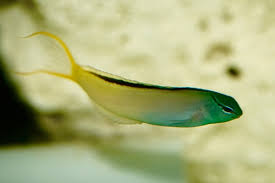Dragons in Chinese Performing Arts and Traditional Culture
The dragon (龙, Lóng) is one of the most significant symbols in Chinese culture. Unlike Western depictions of dragons as fearsome and destructive creatures, Chinese dragons are benevolent beings associated with strength, wisdom, and prosperity. This legendary creature has influenced every aspect of Chinese life, including art, mythology, rituals, and performing arts.
In traditional Chinese culture, performing arts are a vital way of preserving and celebrating historical and mythical figures, and the dragon plays a central role in many of these performances. Whether in dance, opera, puppetry, martial arts, or storytelling, the dragon’s image conveys power, harmony, and divine influence.
This article explores the role of dragons in Chinese performing arts, examining their presence in dragon dances, traditional opera, shadow puppetry, acrobatics, and martial arts.
1. The Dragon Dance (舞龙, Wǔ Lóng) – A Spectacle of Strength and Prosperity
One of the most iconic dragon-themed performances in Chinese culture is the Dragon Dance. This energetic and vibrant performance is a staple in festivals, celebrations, and major cultural events.
1.1. Origins and Cultural Significance
The Dragon Dance dates back more than 2,000 years, originating in the Han Dynasty (206 BCE – 220 CE). Initially performed as a ritual to pray for rain and bountiful harvests, it evolved into a symbol of prosperity, power, and good fortune.
- During the Lunar New Year, the Dragon Dance is performed to ward off evil spirits and bring luck for the upcoming year.
- It is commonly seen in temple fairs, weddings, and national celebrations, signifying strength and unity.
1.2. Performance Techniques and Symbolism
The Dragon Dance is performed by a team of dancers who manipulate a long, flexible dragon structure using poles.
- The longer the dragon, the greater the prosperity—some dragons used in performances extend over 100 meters.
- The dance movements mimic the swimming of a dragon, symbolizing its grace, power, and celestial energy.
- Performers coordinate intricate movements, often forming shapes like the “cloud wave” (云波, Yún Bō) and the “whirlpool” (龙旋风, Lóng Xuán Fēng).
Drums, gongs, and cymbals accompany the performance, enhancing its dramatic effect and keeping dancers synchronized.
1.3. Variations of the Dragon Dance
- Fire Dragon Dance (火龙舞, Huǒ Lóng Wǔ): Performed with a dragon covered in fireworks, creating a mesmerizing fiery spectacle.
- Water Dragon Dance (水龙舞, Shuǐ Lóng Wǔ): Celebrated in southern China to honor river deities and encourage rainfall.
- Night Dragon Dance: Uses LED-lit dragons, creating a glowing illusion in the dark.
The Dragon Dance remains one of the most vibrant and cherished dragon-themed performances in Chinese culture.
2. Dragons in Chinese Opera (戏曲, Xìqǔ)
2.1. The Presence of Dragons in Traditional Opera
Chinese opera is a highly stylized performance art that combines music, dance, martial arts, and elaborate costumes. Dragons frequently appear in operatic performances in two ways:
- As characters – mythical dragons appear as divine beings or symbols of power.
- As costume motifs – actors portraying emperors, warriors, or celestial beings often wear dragon-embroidered robes.
2.2. The “Dragon Robe” (龙袍, Lóng Páo) in Peking Opera
In Peking Opera (京剧, Jīngjù), the “Dragon Robe” is worn by actors portraying emperors or celestial figures.
- It is embroidered with golden dragons, symbolizing imperial power and divine right.
- The number of claws on the dragon indicates status—five-clawed dragons are reserved for the emperor, while four-clawed dragons represent nobility.
2.3. Famous Chinese Opera Performances Featuring Dragons
- “The Legend of the White Snake” (白蛇传, Bái Shé Zhuàn) – Features a dragon deity who aids the protagonists.
- “Journey to the West” (西游记, Xī Yóu Jì) – The Dragon King and his son play critical roles in assisting the monk Xuanzang.
- “Nezha Conquers the Dragon King” (哪吒闹海, Nézhā Nào Hǎi) – Centers on a battle between the boy hero Nezha and the Dragon King of the East Sea.
These performances highlight the dragon’s role in mythology, morality tales, and cosmic justice.
3. Dragons in Chinese Shadow Puppetry (皮影戏, Pí Yǐng Xì)
3.1. The Art of Shadow Puppetry and Dragon Imagery
Shadow puppetry is an ancient form of storytelling where puppeteers use leather puppets to project colorful silhouettes onto a screen. Many legendary dragons feature in these performances.
3.2. Stories Involving Dragons in Shadow Plays
- “The Eight Immortals Cross the Sea” (八仙过海, Bā Xiān Guò Hǎi) – Features a battle against a dragon spirit.
- “The Dragon Pearl” (龙珠, Lóng Zhū) – A story about a magical dragon pearl that brings fortune to a village.
- “The Dragon Princess” (龙女, Lóng Nǚ) – Tells of a dragon goddess who falls in love with a human.
The intricate dragon puppets, controlled with thin rods, create a mesmerizing visual effect that continues to captivate audiences.
4. Dragons in Chinese Acrobatics and Martial Arts
4.1. The Dragon in Wushu (武术, Wǔshù)
Chinese martial arts (Wushu) often incorporate dragon-like movements, reflecting the strength, agility, and power of the mythical creature.
“Dragon Style” Martial Arts (龙形拳, Lóng Xíng Quán)
- A form of Southern Kung Fu, where practitioners imitate the coiling, twisting, and striking techniques of a dragon.
- Movements include sweeping tail kicks, claw-like strikes, and fluid, wave-like body motions.
4.2. The Dragon Staff and Weapons in Martial Arts
Many weapons in Chinese martial arts are inspired by dragons, such as:
- The Dragon Staff (龙棍, Lóng Gùn) – A wooden staff engraved with dragon motifs, used in combat.
- The Dragon Sword (龙剑, Lóng Jiàn) – A weapon symbolizing justice and divine power.
Performances featuring these weapons often blend martial arts with storytelling, creating a visually stunning tribute to the dragon’s strength and wisdom.
5. Modern Interpretations of Dragons in Chinese Performing Arts
5.1. Dragons in Contemporary Stage Performances
- The Beijing Olympics (2008) showcased giant LED dragons in its opening ceremony, modernizing the traditional dragon dance.
- The Shanghai Circus World regularly incorporates acrobatic dragon performances in its shows.
5.2. Dragons in Chinese Cinema and Television
- Films like “The Hidden Dragon” and “The Legend of the Dragon Pearl” continue to popularize dragon myths in entertainment.
- TV dramas frequently feature dragon deities, reflecting the creature’s lasting impact on Chinese performance arts.
Conclusion
The dragon’s role in Chinese performing arts is diverse, symbolic, and ever-evolving. From traditional dances and operas to martial arts and shadow puppetry, dragons remain a powerful representation of wisdom, strength, and divine influence. Their presence in festivals, rituals, and entertainment ensures that the legend of the dragon continues to inspire generations.


